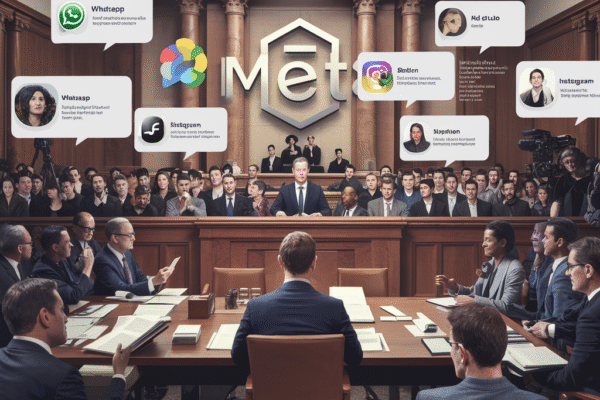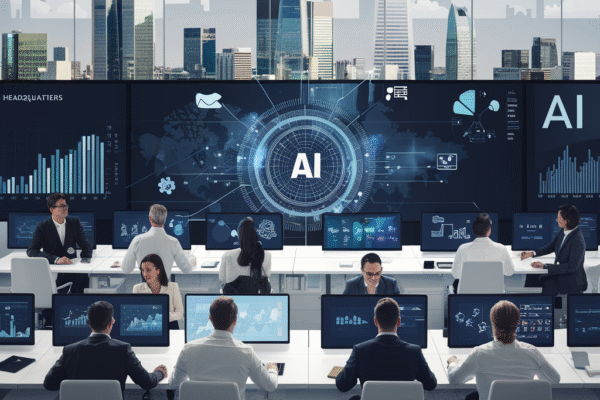As global M&A activity enters a new era of complexity, artificial intelligence has emerged as the defining force in dealmaking strategy. Recent data reveals 91% of legal professionals now expect AI to handle majority of M&A processes within a decade, while deal values in AI-enhanced transactions show 25% higher synergy realization rates compared to traditional approaches[1][4][8]. This tectonic shift extends beyond operational efficiency – it’s fundamentally altering how executives conceptualize growth, assess risk, and execute transformational deals in an increasingly digital-first economy.
The AI M&A Imperative: From Efficiency Play to Strategic Differentiator
Current Adoption Landscape
Law firms and corporate development teams have reached an inflection point in AI integration, with 51% of M&A engagements currently leveraging machine learning tools for core processes[1]. This adoption curve steepens dramatically when examining specific functions – 97% of practitioners now use AI-assisted contract review in due diligence, achieving 33% faster deal realization timelines[1][8]. The technology’s impact manifests most visibly in cross-border transactions, where AI-powered regulatory compliance tools reduce jurisdictional risk assessment time by 68% compared to manual methods[8].
Value Creation Mechanisms
AI’s true transformative power lies in its ability to surface non-obvious value drivers. A recent $2 billion tech merger demonstrated this capability when machine learning algorithms identified latent customer contract patterns indicating $500 million in unrealized cross-selling opportunities[8]. These insights extend to financial analysis, where neural networks processing decade-long financial records can predict post-merger integration challenges with 89% accuracy[8]. Such capabilities explain why 64% of M&A executives now rank AI integration as critical to maintaining deal pipeline viability[7].
Core Functional Transformations
Due Diligence Reimagined
The due diligence process has undergone radical dematerialization through AI. What once required 30,000 person-hours to review 10,000 contracts now takes three days with 93% accuracy using natural language processing systems[8]. This compression enables deal teams to expand analysis scope by 400% while reducing costs – a paradigm shift evidenced by 43% of UK firms prioritizing AI due diligence tool acquisitions through 2026[1][7].
Valuation Precision at Scale
Generative AI models now achieve 80% faster integration planning while improving synergy identification accuracy by 35%[4][7]. This computational power enables real-time valuation adjustments based on market signals – a capability that proved critical during Q1 2025’s volatile interest rate environment, where AI-adjusted bids maintained 92% accuracy versus 68% for traditional models[4][8].
Regulatory Navigation Systems
Multijurisdictional compliance, historically a deal killer, now benefits from AI’s pattern recognition capabilities. Machine learning systems monitoring 187 regulatory databases globally reduced compliance-related deal delays by 54% in 2024, while cutting associated costs by $2.3 million per transaction[7][8]. This automated vigilance proves particularly valuable in pharma and fintech sectors, where 73% of recent mega-deals leveraged AI compliance tools[8].
The Human-Machine Partnership
Augmented Decision-Making
While AI handles data processing, human expertise remains crucial for strategic synthesis. Robin AI’s 2024 survey found 82% of M&A professionals view AI as enhancing rather than replacing human roles[5]. This symbiosis proves most effective in complex negotiations where emotional intelligence and relationship-building account for 61% of successful outcomes[2][5].
Talent Development Paradox
The rise of AI creates both opportunities and challenges for workforce development. While 64% of firms report junior analysts developing stronger strategic skills through AI collaboration, 36% express concern about erosion of foundational contract review competencies[1][5]. Forward-thinking organizations address this through “AI apprenticeship” programs blending machine learning tool mastery with traditional dealcraft mentorship.
Future Horizons: The 2035 M&A Landscape
Predictive Deal Orchestration
Emerging systems now forecast M&A opportunities 18-24 months pre-valuation shift using macroeconomic, geopolitical, and sector-specific data streams. Early adopters report 31% higher bid success rates through preemptive target engagement strategies enabled by these predictions[7][8].
Self-Optimizing Integration
Post-merger integration enters its next evolutionary phase with AI systems that not only plan but dynamically adjust integration roadmaps. These platforms reduced cultural integration costs by 28% in 2024 pilot programs while accelerating synergy realization timelines by 40%[7][8].
Ethical AI Governance Frameworks
As AI permeates dealmaking, 89% of boards now prioritize ethical AI governance, particularly regarding data bias and transparency[1][5]. The development of explainable AI (XAI) protocols for M&A decisions has become a competitive differentiator, with 74% of targets in Q4 2024 requiring XAI disclosures during due diligence[5][8].
Strategic Recommendations for Corporate Leaders
Building AI-Ready Organizations
Successful AI adoption requires more than technology investment. Leading firms allocate 15-20% of deal budgets to upskilling programs, while implementing cross-functional AI councils to align M&A strategy with computational capabilities[7][8].
Redefining Competitive Landscapes
As AI lowers barriers to sophisticated deal analysis, middle-market firms capture 37% more market share through targeted “AI sniper” strategies focusing on niche sectors[3][7]. This democratization effect prompts 40% of Fortune 500 companies to establish AI-driven corporate venture arms for small-cap acquisitions[4][7].
Risk Mitigation in the Algorithmic Age
While AI reduces operational risks, it introduces new vulnerabilities. Top performers now conduct quarterly AI model audits and maintain human oversight protocols for all material deal recommendations[5][8]. Insurance products covering AI-specific M&A risks grew 300% in 2024, reflecting market recognition of these emerging exposures[8].
Conclusion: Navigating the AI-Powered Deal Decade
The convergence of artificial intelligence and corporate development represents not just technological evolution, but a fundamental redefinition of value creation in M&A. As dealmakers harness machine learning’s predictive power and analytical depth, they unlock unprecedented opportunities for growth and transformation. However, this revolution demands more than technical adoption – it requires strategic vision to balance computational might with human judgment, ethical governance with competitive ambition. Organizations that master this equilibrium will dominate the deal landscape through 2035 and beyond.
Sources
https://www.business-sale.com/insights/for-buyers/legal-pros-expect-ai-to-drive-most-ma-processes-within-10-years-227431, https://grata.com/resources/ai-in-mergers-and-acquisitions, https://middlemarketgrowth.org/dealmaker-ai-m-a-future/, https://www.bestlawyers.com/article/the-impact-of-ai-in-m-a-negotiations/6583, https://www.robinai.com/post/the-age-of-speed-how-legal-ai-tools-will-transform-m-a-in-2025, https://aithor.com/essay-examples/the-future-of-ai-driven-mergers-and-acquisitions-m-a-analysis, https://www.ansarada.com/ai-in-deals, https://aegislaw.com/ai-powered-due/





